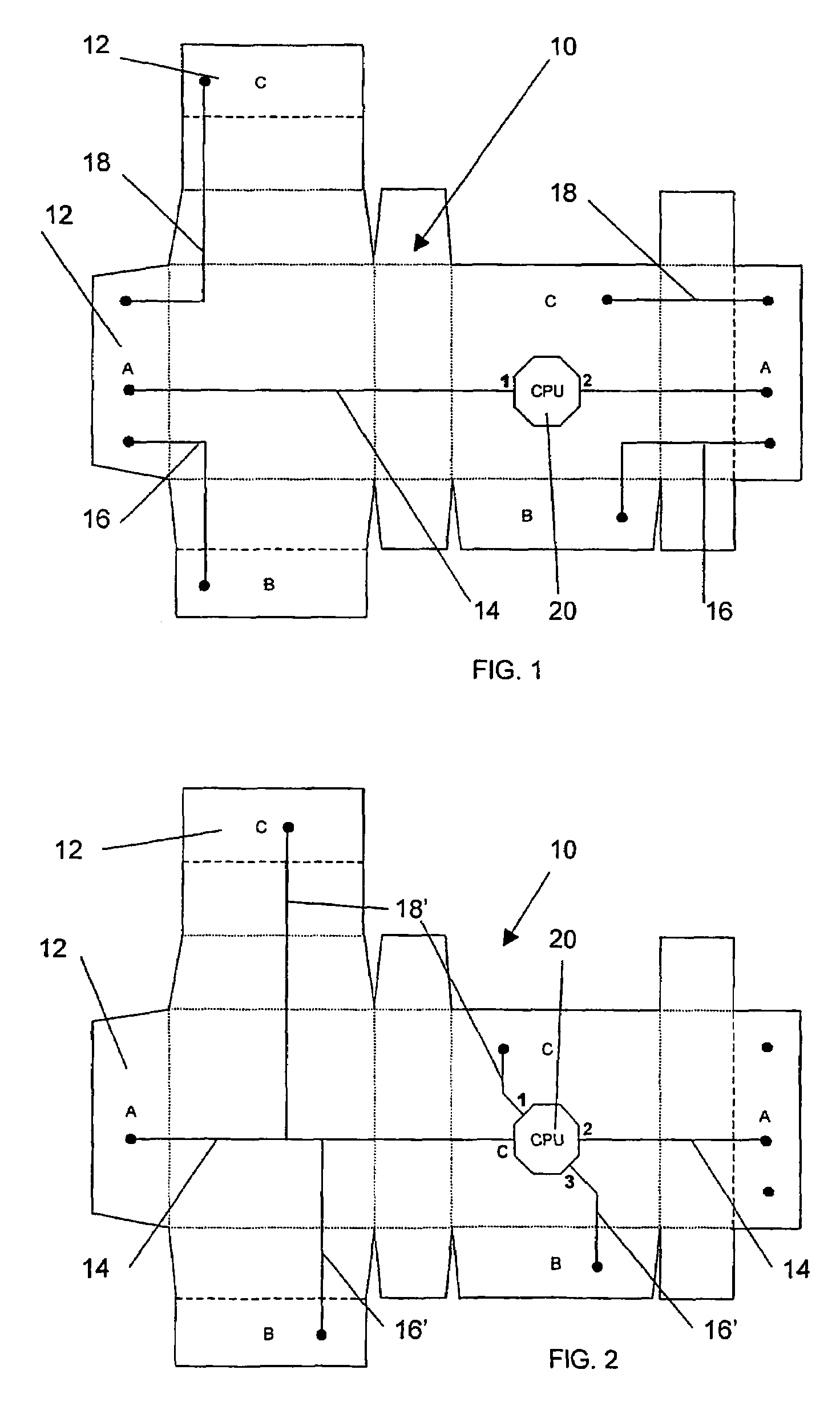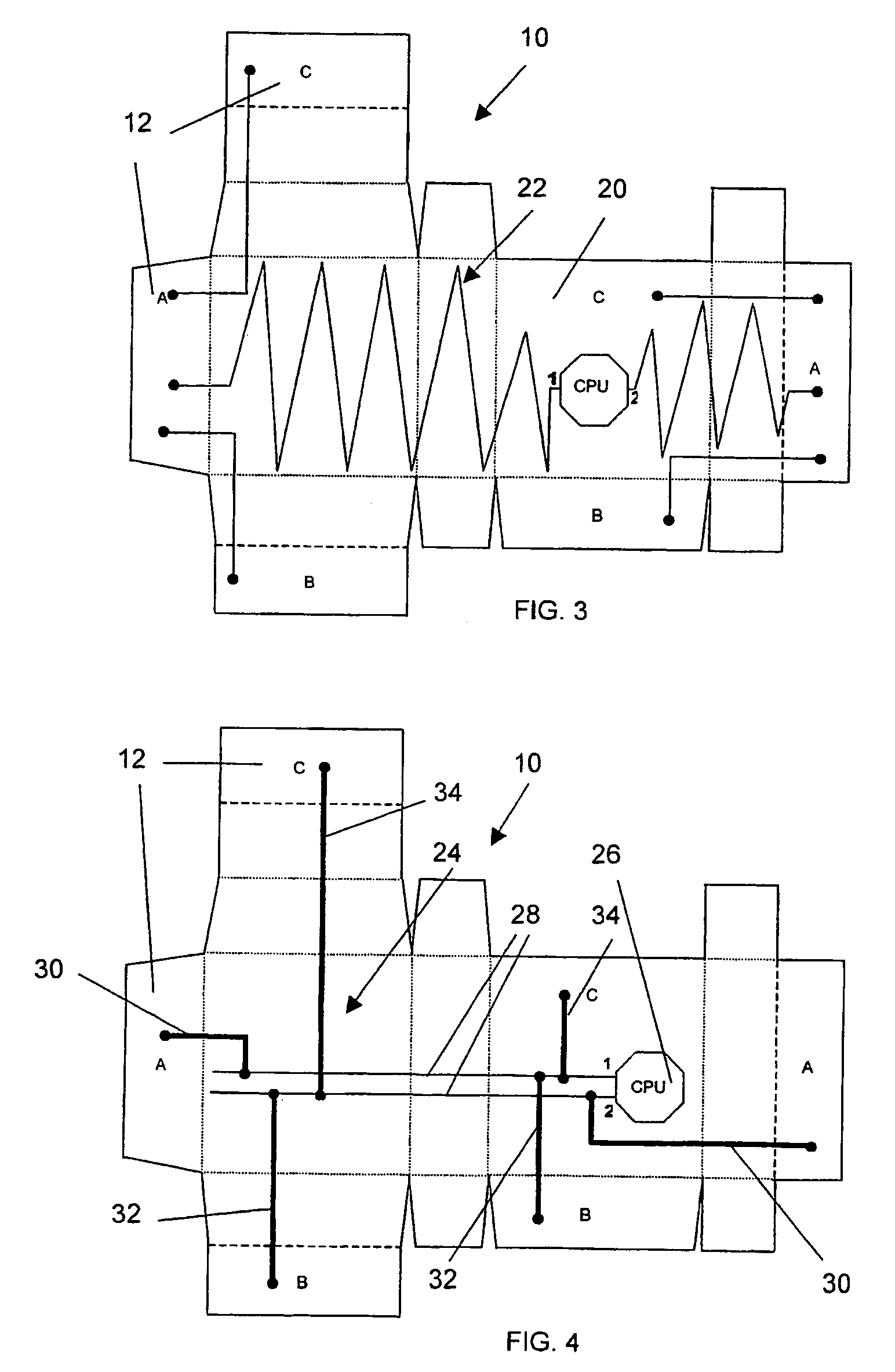Electronic tampering detection system
a detection system and electronic technology, applied in the direction of burglar alarm mechanical actuation, locking devices, instruments, etc., can solve problems such as changes in electrical characteristics of primary circuits, and achieve the effect of increasing light exposur
- Summary
- Abstract
- Description
- Claims
- Application Information
AI Technical Summary
Benefits of technology
Problems solved by technology
Method used
Image
Examples
Embodiment Construction
[0036]Referring to FIG. 1, a digital tampering detection device is described in accordance with an embodiment of the present invention, which device can be integrated in any paper board (cardboard) package during manufacturing. Typically, the package will be formed from a blank 10 provided with at least a pair of closure tabs which are adhesively secured together to close the blank, after folding into a closed package. In the embodiments shown the blank includes pairs of closure tabs A—A; B—B; and C—C which will co-act with each other to close the package. In the application depicted in FIG. 1, the device is arranged to detect unauthorized opening of a package (tampering) via the package's closing tabs.
[0037]The tamper detection system requires the closing tabs of the package (A—A, B—B and C—C in FIG. 1) to be coated with electrically conductive adhesive 12. A system of electrically conducting traces 14, 16, 18 of ink or other material is printed or otherwise applied to the surface ...
PUM
 Login to View More
Login to View More Abstract
Description
Claims
Application Information
 Login to View More
Login to View More - R&D
- Intellectual Property
- Life Sciences
- Materials
- Tech Scout
- Unparalleled Data Quality
- Higher Quality Content
- 60% Fewer Hallucinations
Browse by: Latest US Patents, China's latest patents, Technical Efficacy Thesaurus, Application Domain, Technology Topic, Popular Technical Reports.
© 2025 PatSnap. All rights reserved.Legal|Privacy policy|Modern Slavery Act Transparency Statement|Sitemap|About US| Contact US: help@patsnap.com



